Where to see wild animals in Australia
These homegrown ‘safari’ experiences are ideal for animal lovers who aren’t ready to venture overseas.
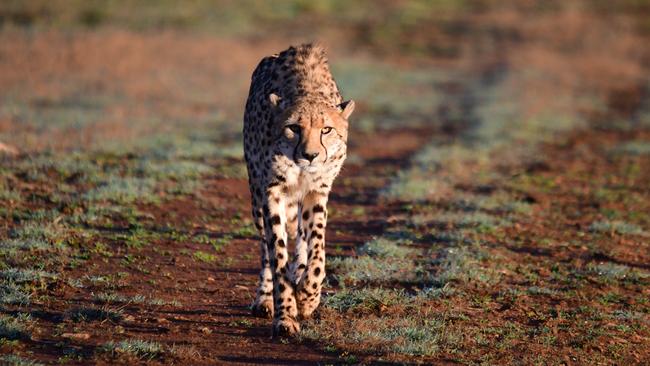
TARONGA ZOO, SYDNEY
“Hurry and feed them!” urges a khaki-clad keeper. We have booked a Giraffe Encounter and three-year-old granddaughter Mia is so transfixed by the doe-like eyes and searching tongues of Kito and Ebo that she’s holding two carrots in a rock-solid grip. “Quick, they’ll walk away!” Mia relinquishes the vegetables and they’re scoffed in greedy gulps. It might not be the fabled Giraffe Manor in Nairobi or a breeding sanctuary in east Africa, but there’s something irresistible about marching orders that come with directions to meet your guide “by the rainbow-patterned baobab trees at the African Savannah”. The zoo’s “giraffe tower” is made up, from tallest to shortest, of Jimiyu, Zarafa, Kito and Ebo and encounters run daily in five sessions from 1.30pm to 2pm, with a maximum of four persons at once. It’s a short window and same-day tickets are available from 9am at the zoo’s Top Plaza Shop. It’s all over in the blink of a long-lashed eye but Mia needs no persuasion to eat her carrots for dinner.
Stay On-site Roar and Snore safari-style tents with behind-the-scenes activities or upscale Wildlife Retreat at Taronga.
SUSAN KUROSAWA
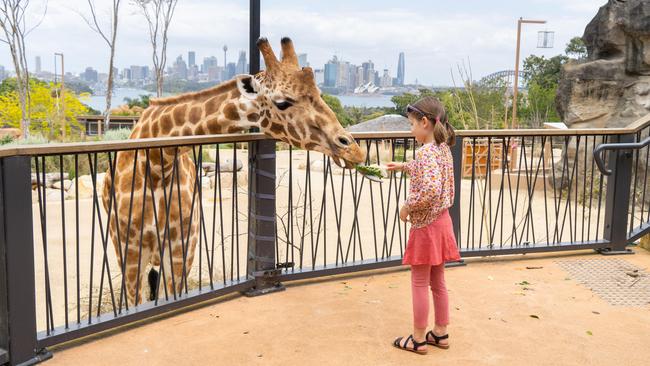
PHILLIP ISLAND, VICTORIA
The little penguins of Phillip Island became unlikely internet stars during Victoria’s lockdowns, when more than 25 million viewers tuned in to the daily livestream of the world famous Penguin Parade. While the appeal of wildlife safaris is often the spontaneity, it’s the predictability of the penguin parade that makes it magic. Each dusk, up to 4000 little penguins – the largest colony in the world – emerge from the surf and make a dash for the safety of their nesting burrows above Summerland Beach. As sure as the sun will set, the penguins will run (or rather waddle) the gauntlet, the cover of darkness giving protection from predators such as swamp harriers and wedge-tailed eagles. Now reopened to the public, visitors watch breathlessly from a beachside viewing platform, or – for a special few – an underground, glass-fronted bunker, eye-level with “penguin highway”. A Phillip Island Nature Parks 4 Parks Pass gives entry to Penguin Parade, Koala Conservation Reserve, Antarctic Journey and Churchill Island Heritage Farm.
Stay Five Acres; fiveacres.com.au.
RICKY FRENCH
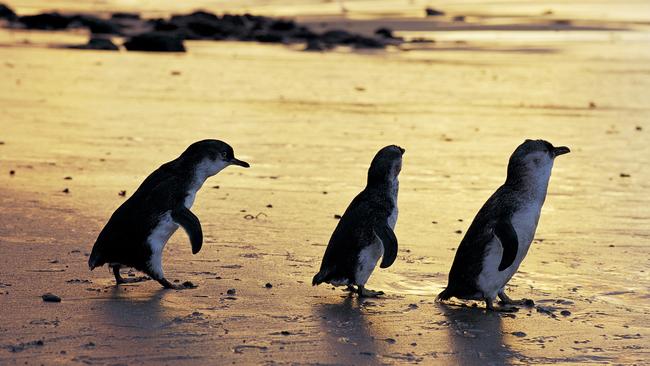
MONARTO SAFARI PARK, SA
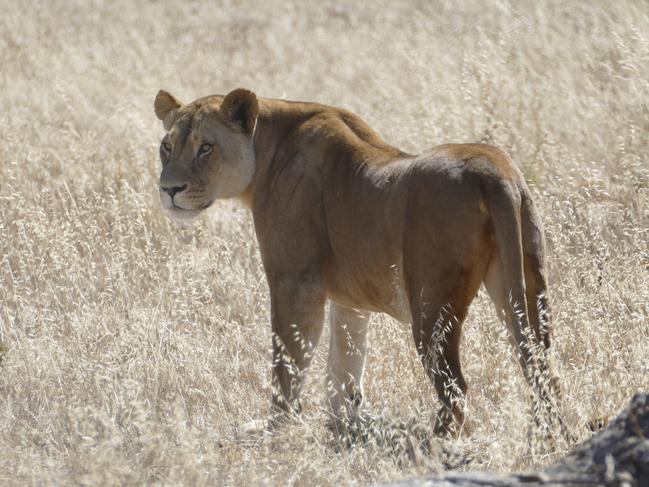
Hop on the Zu-loop bus to experience South Australia’s slice of the Serengeti, where you can see everything from giraffes, rhinos and African painted dogs to multiple antelope species, meerkats minding their manors and local critters such as Tassie devils and rock wallabies. About 500 animals live in various enclosures at this impressive 1500ha site, about an hour’s drive from Adelaide. Lions and cheetahs are the big cats of the show, and visitor experiences (currently suspended because of the Omicron outbreak but scheduled to restart next month) include the chance to feed them and call them into their sleeping quarters. Don’t miss the hilarious chimpanzees as they cavort around their glass-enclosed “treehouse” and wrestle with one another. It’s all happening at Monarto, with a new visitors centre, resort and glamping accommodation in the works. Plus, there will soon be the pitter patter of little paws, as eight-year-old lioness Husani is expected to give birth to her second litter of cubs in a matter of weeks.
Stay Mount Lofty House; mtloftyhouse.com.au.
PENNY HUNTER
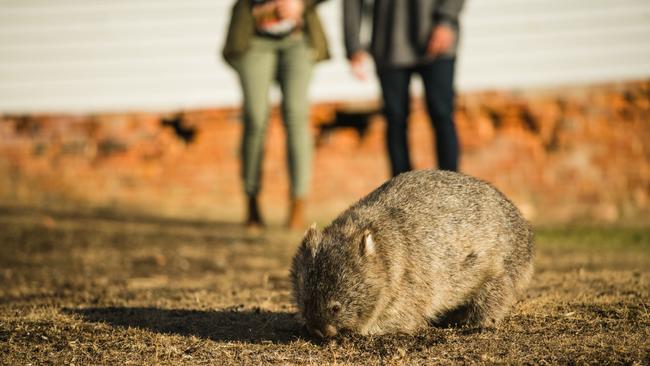
MARIA ISLAND, TASMANIA
This is non-stop delight for thrill-seekers, nature lovers, history buffs and geologists; you might even get a swim when you moor for lunch. From the moment we depart Triabunna Marina aboard the 25-seat MV Spirit of Maria, skipper and owner Mike Davis wraps us up in a blanket of knowledge and unashamed emotion for this place. He left his career as a marine biologist and fisheries scientist to launch his cruises 15 years ago and strives to ensure that tourism and wildlife are kept in balance. Davis runs a tight ship when he cruises up to Ile des Phoques, a granite island with a fur seal population and amazing caves, taking care that his vessel doesn’t disturb them or the sensitive ecology. We moor for a relaxed walk around Maria (pronounced Mar-eye-ah), where there are Cape Barren geese, Forester kangaroos, pademelons and wombats so ridiculously tame that a couple of years ago the locals asked tourists to pledge not to chase them with selfie sticks.
Stay Prospect House Hotel in Richmond; prospecthouseprivatehotel.com.au.
JANE NICHOLLS
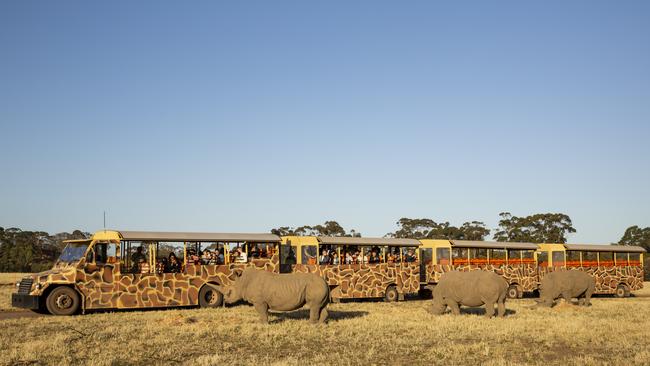
WERRIBEE OPEN RANGE ZOO, VICTORIA
Travel 30km west of Melbourne’s CBD and, improbably, you lob into Africa. Werribee Open Range Zoo features Australian animal and Werribee River trails but it’s the 45ha of multi-species savannah that’s the main drawcard. Board the giraffe-print bus for the Safari Tour and you might spot a tower of giraffes galloping gracefully across the grasslands as though in slow motion. Other drawcards include rhinos, zebras, hippos, cheetahs, lions and gorillas. On weekends until March 13, the after-hours Sunset Safari adds a golden glow to the experience. Prefer to keep to yourselves? Board the Deluxe Safari Adventure’s zebra-print bus with your own guide. The zoo also offers animal encounters that range from meeting African wild dogs to helping keepers prepare the animals’ breakfasts before the gates open.
Stay The zoo’s Slumber Safari Camp or, for ritzier surrounds, the Lancemore Mansion Hotel Werribee Park 1km away; lancemore.com.au.
KATRINA LOBLEY
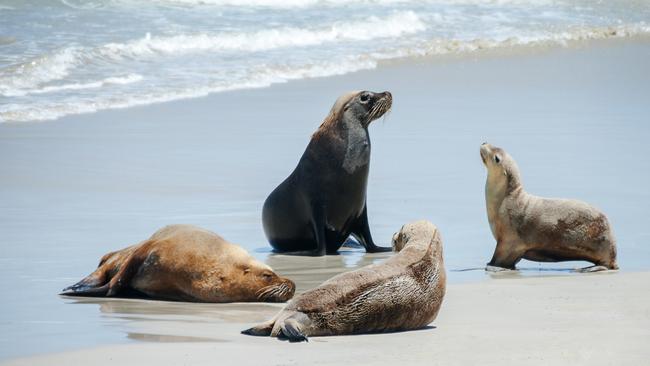
KANGAROO ISLAND, SA
Tours of varying lengths and inclusions from award-winning operator Exceptional Kangaroo Island present creatures galore, from koalas snug and snoozy in the branches of gum trees to gem-bright parrots and little honeyeaters. Spot tammar wallabies endemic to this wildlife ark of an island and sooty-coated, stocky kangaroos. Australian sea lions crest the waves as fish-hunting ospreys circle the Galapagos-worthy Seal Bay Conservation Park. Look for the likes of glossy black cockatoos and echidnas in Baudin Conservation Park, wading birds in the Chapman River estuary and Cape Barren geese waddling like uncorseted matrons beside and across the island’s satisfyingly untamed roads. On day-long outings, lunch is provided at a private bush camp, and itineraries often go delightfully off-script as news comes in of special sightings. Newly added guided walks, with Mercure KI Lodge as base camp, span six days with a conservation focus and inclusions such as oyster tastings and premium picnics.
Stay Thorn Park on the Island; thornpark.com.au.
SUSAN KUROSAWA

MORETON ISLAND, QLD
It’s wild, when you think about it, that a place such as Moreton Island sits a mere 40km from a major city. The world’s third largest sand island feels rugged and remote, attracting 4WD enthusiasts, nature lovers and those who simply want to get away from it all. The island’s largest development is the resort, which for the past 30 years has fed wild bottlenose dolphins. Today, the dolphins slide in near the jetty at dusk to take a silvery fish straight from the hand of visitors who wait in knee-deep water. Staff know each dolphin by name and records are kept of the aquatic visitors. That could easily be enough but there are more creatures to meet just down the beach. A cluster of 15 shipwrecks, which help create safe anchorage, is so close to shore that you can easily swim out to it. Take your snorkelling gear to cop an eyeful of the fish and turtles that come here to play.
Stay Tangalooma Island Resort; tangalooma.com.
KATRINA LOBLEY
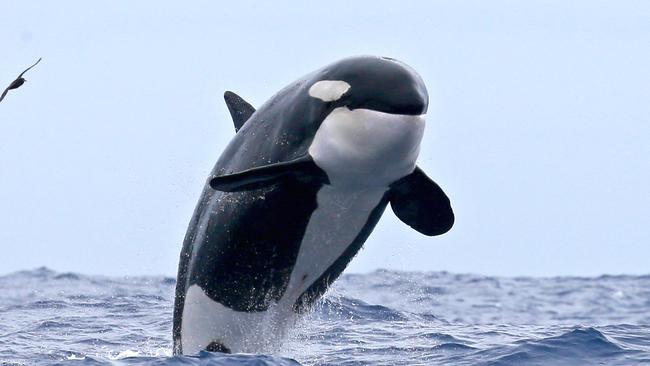
BREMER BAY, WA
Bremer Canyon in Bremer Bay is the only place in Australia to reliably see killer whales (orcas), with the spectacle occurring annually between January and April. Naturaliste Charters operates tours to the orca hotspot, 45km out to sea. Take your sea sickness tablets in advance, as the trip is notoriously lumpy. Over the Bremer Canyon, the depth plummets from 80m to 1000m. Deep currents flush up nutrients, stimulating the food chain all the way up to the orcas, which feed on other marine mammals. Best not be squeamish as you may witness a kill, a heart-pounding churn of black and white, fins and flesh. The crew’s marine biologist explains some individuals revisit every year and have been given names. However, where the orcas migrate to remains a mystery. The canyon is a hotspot for other marine wildlife, and visitors may chance across albatrosses, sharks, oceanic sunfish, beaked whales, sperm whales, pilot whales or blue whales. A professional photographer is on hand to capture the experience, so you can focus on the bonanza.
Stay Bremer Bay Resort; bremerbayresort.com.au.
CAROLYN BEASLEY
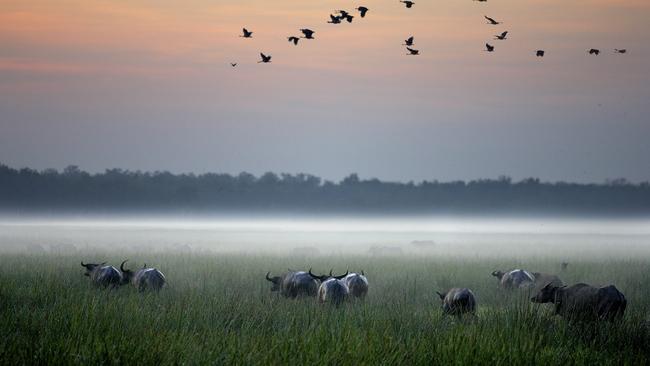
BAMURRU PLAINS, NT
From arriving at an airstrip near the lodge via small aircraft to sundowners, Bamurru Plains delivers the grand African safari Australian-style. Astonishingly knowledgeable guides take us flying thrillingly across the floodplains in an airboat, magpie geese rising from the spike rushes all around. We head out on safari in an open 4WD, and take a speedboat ride along croc-rich Sampan Creek. Between safaris, we cool off in the infinity pool looking out over a giant flock of noisy plumed whistling ducks and clutches of crazy corellas. Meals are communal in the central pavilion, where an open bar kicks off the nightly entertainment, and guests trade stories of the day’s wonders. With some 236 species of birds about, twitchers are particularly vocal. The decor in the 10 bungalows deftly blends luxurious and rustic, with ingenious one-way screens letting us watch the passing parade of locals outside. Brumbies, buffalo, agile wallabies et al go about their business oblivious to our spying. This is a round-the-clock safari.
Stay Bamurru Plains, part of the Wild Bush Luxury group, is open for guests March to October.
JANE NICHOLLS
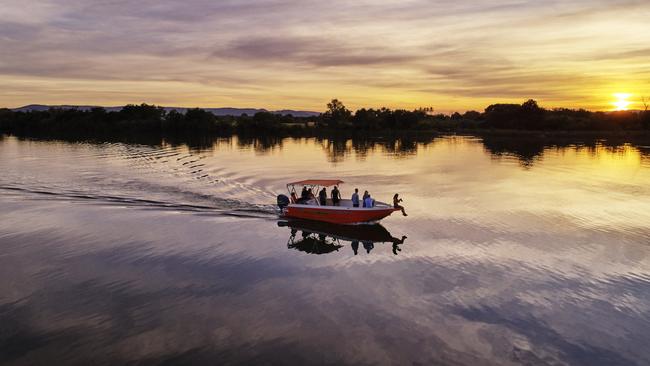
EAST KIMBERLEY, WA
Thanks to some epic engineering 60 years ago, the Ord River no longer evaporates into a daisy-chain of waterholes each dry season. The river was plugged to create the Diversion Dam and Lake Kununurra, then later Lake Argyle, as part of the Ord River Irrigation Scheme. Although designed to boost agriculture, the works also nourished tourism. From Kununurra, the town built to service the irrigated area, step aboard a shade-covered boat that zooms along a 55km stretch to Lake Argyle’s towering dam wall (the cruise also operates in reverse). You’ll soon stop counting freshwater crocs – thousands populate the river – and marvel at other creatures. Jacanas high-step across lily pads, Australasian darters dive-bomb the fish-rich waters and white-bellied sea eagles wheel in the cloudless sky. Tortoises bask on logs. Keep watch on the cliffs and riverbanks, too, for rock wallabies and euros.
Stay Freshwater East Kimberley Apartments; Kununurra, freshwaterapartments.net.au.
KATRINA LOBLEY
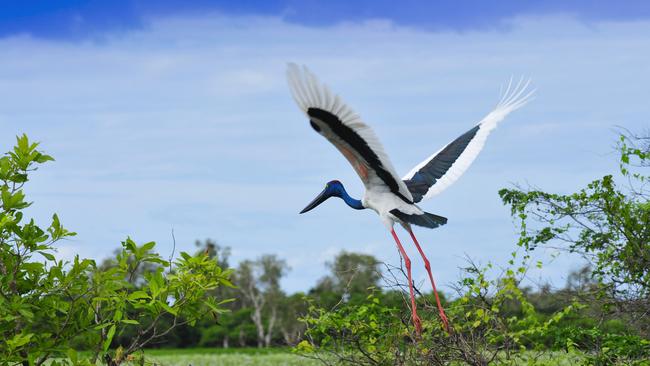
KAKADU NATIONAL PARK, NT
I’m reminded of a scene from Jurassic Park (movie No. 3 if memory serves) as we chug down Kakadu’s Ngurrungurrudjba (Yellow Water) aboard a flat-bottomed boat, speaking in whispers, senses heightened, alert to the whip splash of a crocodile’s tail and the ominous susurration of bamboo (just a cranky bull buffalo not a Spinosaurus). Kakadu is rich territory for safari fans, even more so for keen birders. Some 300 species, a third of Australia’s total, are found across the region’s Ramsar-listed wetlands. That’s why we’re talking in such hushed tones, as this safari is with NT Bird Specialists and sightings can be elusive. Up at dawn, out ’til dusk with guide Luke to photograph sea eagles, spoonbills anddancing brolgas, tiny kingfishers that are all beak, dainty rainbow pittas and elegant night herons. We are on foot and on boat exploring stone country, sleepy billabongs and the tea-coloured waters of the Alligator, immersing ourselves in a place so wild it could be from the age of the dinosaurs.
Stay Cooinda Lodge unveils new ensuite glamping tents this year; all.accor.com.
CHRISTINE McCABE
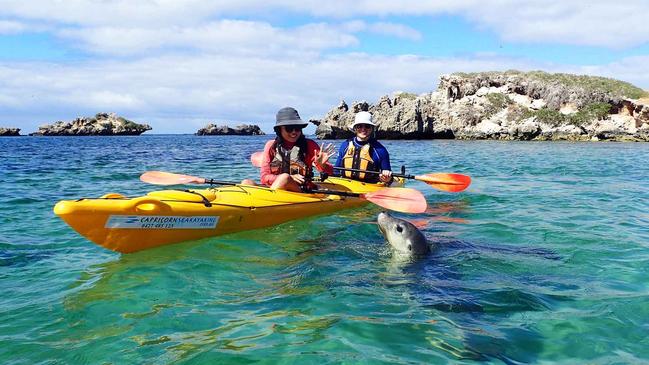
ROCKINGHAM, WA
The endangered Australian sea lion, one of the most engaging critters in the sea, is only found along the coastline of Western Australia and South Australia. Inquisitive and playful, they’re like the puppies of the ocean. With no engine noise and being at water level, a sea kayak provides a great way to interact with the marine mammals. Capricorn Seakayaking offers daytrips from Rockingham, just 45 minutes south of Perth, exploring the Shoalwater Islands Marine Park in double kayaks from September to April, venturing no more than 1km offshore. At Seal Island, the wild sea lions often cavort between the kayaks, or may simply strike a pose on the beach. Then it’s on to Penguin Island for a guided walk, dropping in at the Penguin Discovery Centre. In the summer months, jump in for a snorkel with the vibrant fish life on the rocky reefs. On the way home, the afternoon wind known as the Fremantle Doctor often assists the paddling, and visitors occasionally encounter resident dolphins.
Stay Rockingham Apartments; rockinghamapartments.com.au.
CAROLYN BEASLEY





To join the conversation, please log in. Don't have an account? Register
Join the conversation, you are commenting as Logout